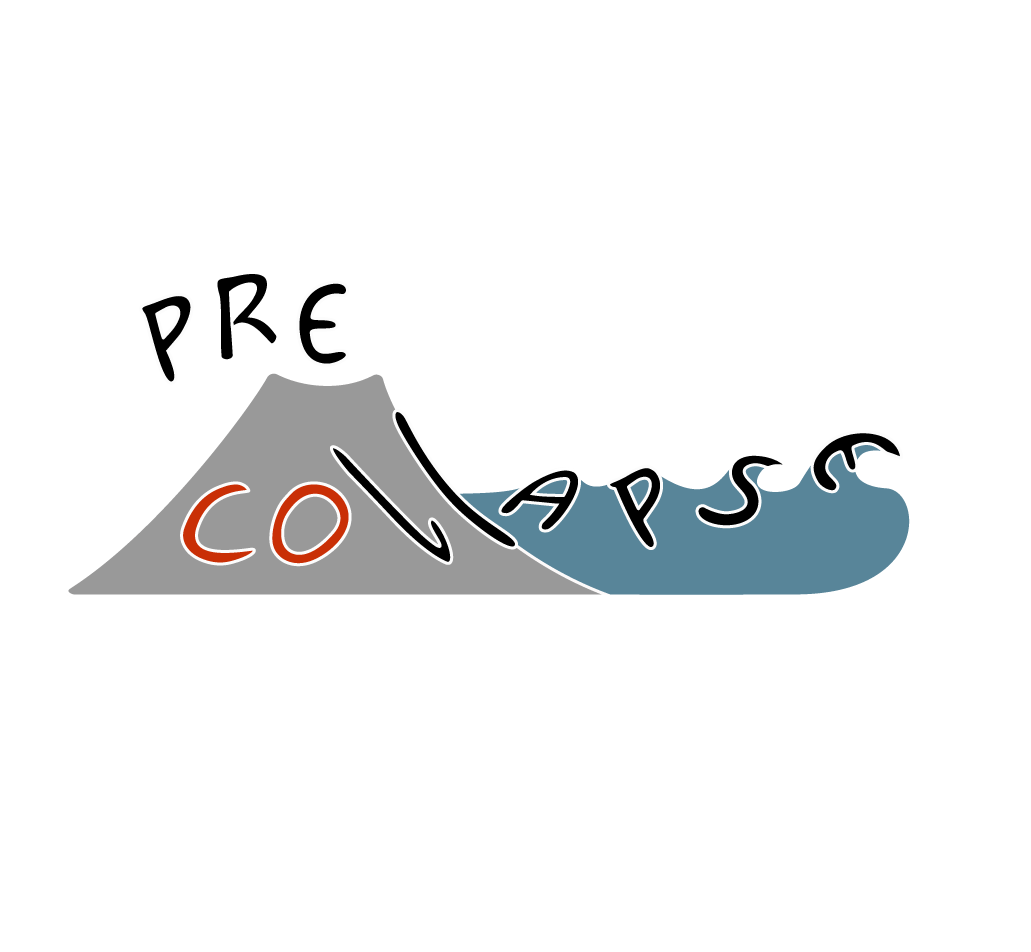Scaling Down Collapse: Sand Pile Experiments to understand Gravity-Induced Sliding
Many volcanoes around the world show signs of gravitational collapse—ranging from slow deformation at just a few millimetres per year to sudden, catastrophic landslides. In her Master thesis, Julia Knüppel used analogue modelling to study these slow-moving, gravity-driven processes that can eventually lead to large-scale volcanic collapse.
Volcanoes often grow rapidly, depositing heavy materials like lava, tephra, and ignimbrites (from pyroclastic flows) on steep slopes. Over time, this build-up can cause an imbalance—especially when the volcano rests on a weak base that can be composed of marine sediments, clay, or hydrothermally altered rocks. These weak layers are prone to act as sliding-plane at which the mobile flank of the volcano is detached from the base. Although these movements usually happen slowly—just a few centimetres per year—they can accelerate dramatically if triggered by an earthquake or eruption.
Building Volcanoes in the Lab
At GFZ Potsdam, Julia recreated small-scale volcanoes using analogue modelling techniques. The models were scaled down—not just in size, but also in material properties and time.
Her model volcanoes were built in layers to mimic natural conditions: Ductile basement (e.g. weak marine sediments, saturated clays or altered carbonate layers) – represented by a silicone-corundum mixture; brittle substratum (e.g. sandstone or limestone)– modelled with dry sand; volcanic edifice (lava, tephra, etc.) – created from a flour and sand mixture.
In different experimental setups, she varied the slope angle in the brittle substratum and the position of the volcanic edifice relative to this slope to systematically explore how these variables affect the deformation patterns. The aim was not to rebuild natural volcanoes; but to study the surface deformations and then find out by which basement geometry they are affected. This then may help to understand the collapse-driving mechanisms of those volcanoes on Earth that are less explored beneath the surface.
Observing Collapse
In the real world, surface deformation of volcanoes is monitored using geophysical and geodetic methods. But what’s happening beneath the surface—or under the sea—is much harder to observe. Julia’s experiments are one way to bridge that gap, revealing how internal structures control external deformation.
High-resolution cameras and 3D particle image velocimetry (PIV) were used to track even the smallest shifts in the experimental volcanoes. The results show that: Graben structures and faults commonly develop in the volcanic edifice and brittle substratum. Sagging (subsidence without edifice deformation) and spreading (horizontal expansion with faulting) are key components of the deformation. The thickness of the brittle layer plays a crucial role: the thicker it is the more stable is the edifice and spreading is mitigated.
Learning for Etna—and Beyond
The experiments were motivated by Mount Etna in Sicily, where the southeast flank is slowly sliding into the sea. Despite the basement slope being just 5° beneath the onshore part of Etna, its entire East Southeast flank moves several centimetres per year. This might—under the right conditions— someday result in a catastrophic collapse.
The experiments confirmed that the eastward inclined surface of Etna’s sedimentary basement, which extends into the Ionian Sea, favours asymmetrical sector collapse. Also the faults that occur are similar to those at the real volcano confirming the methodological feasibility.
Other volcanoes, such as Piton des Neiges (La Réunion), Concepción (Nicaragua), and Sajama (Bolivia), exhibit similar slow deformations, suggesting common underlying mechanisms.
Julia’s work highlights how experimental, very simple volcano models can be powerful tools to test hypotheses and interpret field data. By mimicking the general structure of volcanoes under gravitational collapse, her results provide a window into processes that are otherwise hidden beneath the surface—or below the sea. One important finding was that the basement geometry away from the volcano still affects the collapse. This underlines the relevance to study for example the submarine base of Etna more intensively.
Using sand, flour, and silicone, Julia simulated volcanoes based on a weak and a brittle substratum to understand how the geometry of these geological layers influences surface deformation.
Julia Knüppel preparing the experiment in the „Analogue Laboratory“ of GFZ. The model volcano is placed on the substrata by pouring the sand-flour mixture through the funnel.
Sketch of the setup geometry. Cameras and light are fixed on a pole above the tray in which the volcano and its base is modelled.
Cumulative displacement in x-direction for two experiments with different distances between the basement slope (grey shaded area) and the edifice (dashed circle). A slope away from the edifice has still a great influence on the deformation pattern.
Eastward displacement at Etna‘s ESE flank between 2019 and 2023 and bathymetry, determined by InSAR. Data from EGMS (European Ground Motion Service).
Julia Knüppel made analogue models to experimentally investigate how the geometry of a volcano’s basement controls surface deformation under gravitational loading.
Digital elevation (DEM) model of one deformed volcano model on a 5° brittle basement slope. Parallel lines in the brittle layer are due to the procedure and have no meaning here.
Shaded DEM. The zones of highest strain are highlighted in different colour depending on the rake angle. Thus, we can find out the slip direction of the faults within the model.
Shoreline-crossing fault slip representation of Mount Etna’s southeastern gravitational flank movement. (Urlaubt al., 2018)









